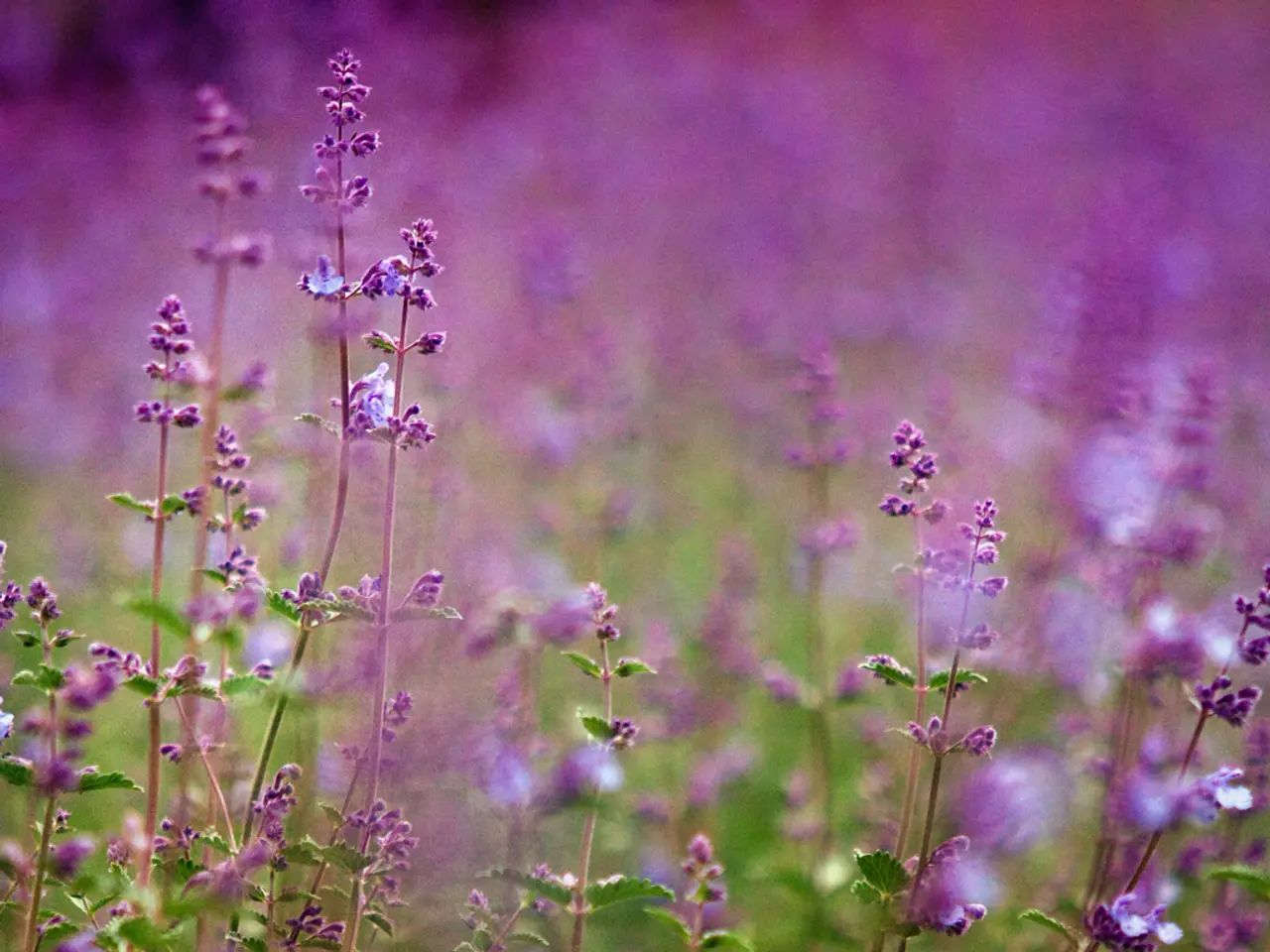Strategies for Reviving a Fading Lavender: Ten Approaches to Consider
Lavender, a beloved plant from the Mediterranean region, is a popular choice for many gardeners due to its fragrant flowers and versatile uses. Here's a guide to help you care for your lavender plants effectively.
Firstly, it's important to consider using a sterile planting medium for lavender plants. This helps to ensure optimal growth conditions.
When it comes to watering, lavender plants prefer infrequent watering, typically once every two weeks. Excessive watering can lead to root rot and yellow leaves, so be mindful of your watering schedule.
Pruning is an essential part of lavender care. Prune your plants twice a year to support healthy root development and remove old growth. The best times to prune are in the early spring before flowering and in the late summer or early fall after the summer's bloom.
When transplanting your lavender plant, fluff out the roots to encourage growth. Remember, lavender plants do not like to have wet roots, so proper drainage is essential.
A mature lavender plant may outgrow its container, requiring a larger one. If you're growing your lavender in a container, consider using a lavender soil mix when choosing a larger container.
Lavender plants prefer full sun, poor soil with good drainage, and alkaline soils. They may suffer if amended with conventional potting mix or compost. If your soil is soggy, improve drainage or change the soil for lavender plants.
It's also worth noting that lavender plants can face various issues, such as diseases, pests, or improper lack of sunlight. The alfalfa mosaic virus can turn lavender leaves yellow and curling, spreading through infected tools and insects. To avoid spreading the virus, sanitize tools and destroy the entire plant if infected. Fungal infections can cause the plant to turn gray, requiring trimming of dead sections, treatment with a fungicide, and replanting in fresh soil.
In colder areas, move your lavender plants indoors during winter to avoid frost and snow. If growing indoor plants, place them in a bright window or consider supplementing with a grow light during the winter months.
Lastly, lavender plants can last many years, up to 20 years or so, if properly cared for. Trimming a few inches of green growth at the top of branches can give woody lavender plants a boost in energy. If you notice your plant is root-bound (showing minimal growth and roots growing out of the drainage holes), it may be time to replant it in a larger container.
The lavender plant mentioned in this article was cultivated in 2020, demonstrating the longevity of these beautiful plants with proper care. Happy gardening!




